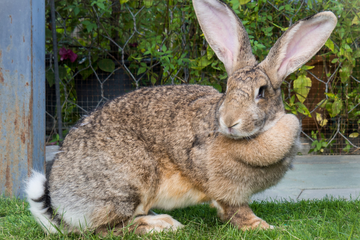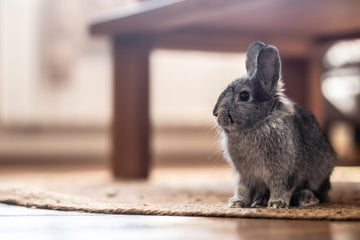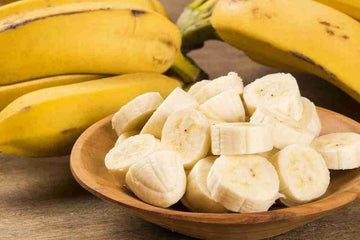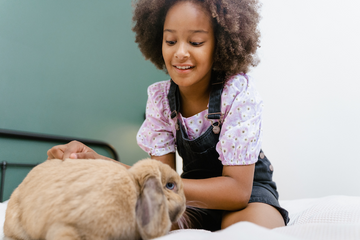Do You Know What to Feed a Wild Baby Rabbit?
You find yourself walking down the road and you spot a rabbit’s nest that looks like it had been attacked by another animal. What do you do? Naturally you might find yourself inching towards the nest to see if there were any baby bunnies that could have survived the attack. And there you see it, a cute little bun that needs your love and affection. But do you know what to feed a wild baby rabbit?
Click Here For a Guide to Feeding Your Baby Rabbits.

Let’s start with the basics about rabbits in general. Baby rabbits are only fed from their mother a few minutes a day. A mother’s milk is packed with the necessary nutrients that feeding once is more than enough for the little bun.
The feeding normally occurs at night to help protect the babies. The mother rabbit can be seen away from the nest during the day which is why it is important to leave babies in nests alone unless you are confident that the mother has either abandoned the nest for good or has died. So needing to take care of a wild baby rabbit is rare, very rare.
So what do wild baby rabbits eat when they don’t have their mother giving them their nutrient packed milk? Rabbit.org provides this information on what to feed an orphaned wild baby rabbit until you are able to take them to a wild rabbit rescue.
Feeding Of True Orphans
Age + Amount (This WILL vary SO MUCH depending on type of rabbit. It is impossible over the Internet to see your particular rabbit, so this is only approximate.) Use KMR kitten or KMR kitten plus Goat milk, regular not low fat. Add a pinch of acidophilus (aka Probiotic) to the formula to promote healthy gut flora. Formulas vary depending on region. Avoid Esbilac and any puppy formulas! FEED TWICE A DAY ONLY for healthy babies. It may be easiest to start with a 3 cc/ml syringe or an eyedropper. Feed only with the bunny sitting UPRIGHT, and point syringe down towards bottom or side of mouth, so if too much comes out, the baby does not aspirate. At first, they may only take a few drops at one feeding until they are not stressed and used to this.
-
Newborn to One Week: 2 – 2+1/2 cc/ml each feeding (two feedings per day).
-
1-2 weeks: 5-7 cc/ml each feeding (two feedings per day). (depending on bunny..may be much LESS if smaller rabbit!) Newborn babies (if eyes closed) all need to be stimulated to urinate and defecate prior to or following feeding until their eyes open. (Except Jackrabbits do not). *See how to below.
-
2-3 weeks: 7-13 cc/ml each feeding (two feedings). Domestic eyes open at about 10 days of age. Start introducing them to timothy and oat hay, pellets and water (always add fresh greens for wild ones).
-
3-6 weeks: 13-15 cc/ml each feeding (two feedings–again, may be LESS depending on size of rabbit! A cottontail/brush bunny will take so much less!! Half this at most.) Cottontails wean and release about 3-4 weeks and jackrabbits much later (9+ weeks), whereas domestic rabbits are 6 weeks.
-
6-9weeks: for Jackrabbits only, continue up to 9 weeks with formula, gradually changing to a dish for the warm formula, replacing the formula after 9 weeks slowly with a a dish of cup-up tiny banana or apple pieces.
To read more on how to take care of an orphaned rabbit, read the full article from here.
What Do Wild Rabbits Eat?
A wild rabbit’s diet varies on the temperature they are living in. When the temperature is warmer, their diet consists of: clover, flowers, grasses and other plants that grow in that temperature. When the temperature is cooler, their diet becomes more sparse including: twigs, bark and remaining greens. Sounds very different from the Timothy Hay and Orchard Grass that a domesticated rabbit might eat right?
Not sure if your momma rabbit is feeding your new baby rabbits? Do you need to know how to feed your baby rabbits by yourself? Download our Human's Guide to Feeding Baby Rabbits to learn about what to look for in your baby rabbits, feeding techniques, a feeding schedule and more! We pride ourselves on supporting a community of small pet owners who care deeply about providing happy and healthy lifestyles for their pets.

Large Rabbit Breeds: What You Need to Know

Apartment Rabbit Keeping Made Easy

Easy DIY Rabbit Treat Recipes for Beginners




